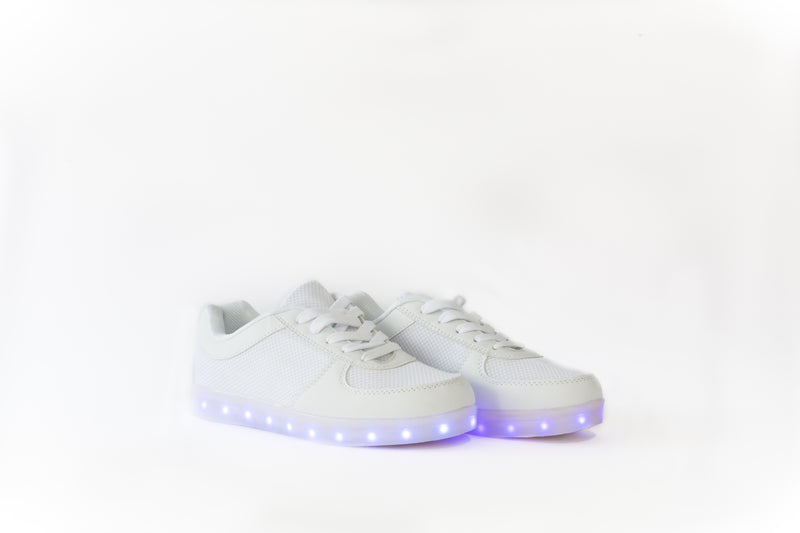As modern cars become increasingly more advanced, the technologies used to power their features have become more efficient and effective. One of the most noticeable changes in car design over the years has been the innovation of headlights. HID and LED headlights are two of the most popular options available today, but what is the difference between them? In this blog post, we’ll be exploring the automotive differences between HID and LED headlights, so read on to find out more!

What is the Automotive Difference between HID and LED Headlights?
The Automotive Difference between HID and LED Headlights
When it comes to automotive headlight technology, there is a big difference between HID and LED headlights. HID headlights use a halogen bulb, while LED headlights use a LED light.
The biggest difference between HID and LED headlights is cost. HID headlights are much more expensive than LED headlights, and the performance difference is also significant. LED headlights are much brighter and have a longer lifespan than HID headlights.
LED headlights also have some advantages over HID headlights when it comes to reliability and performance. For example, LED headlights are more resistant to heat and can last longer without requiring replacement.
Overall, the automotive difference between HID and LED headlight technology is significant. If you’re looking for better driving visibility, you should definitely consider investing in an LED headlight system.
Comparing Cost, Performance, and Reliability of HID and LED Headlights
When it comes to automotive headlights, there are a variety of options available, including high-intensity discharge (HID) and light emitting diode (LED). While both technologies offer their own unique benefits and drawbacks, the biggest difference between them is cost.
HID headlights tend to be more expensive than LED lights, but they also offer better performance. They’re capable of producing a wider range of colors, which makes them ideal for use on vehicles with a wide range of trim levels. Additionally, HID headlights last longer than LED lights and don’t require as much maintenance.
On the other hand, LED headlights are cheaper to buy new but may not provide the same level of performance as HIDlights. They can also be less reliable in cold weather conditions or under low light conditions. Additionally, they typically don’t produce as many colors as HID headlights do. However, they’re more energy-efficient and seldom require replacement bulb installation – making them a good choice for vehicles that frequently travel in bright sunlight or during night time driving.

Understanding the Pros & Cons of HID vs LED Technology
There are a few key reasons why HID headlights may be a better choice for your vehicle than LED headlights: they offer greater light output and range, tend to be more reliable, and come with a longer lifespan. However, there are also some significant disadvantages to consider when making this choice; specifically, HID headlights tend to be more expensive than LED headlights and require upgraded components in order to function properly. In addition, while both types of lights offer similar levels of safety features, the illumination produced by LEDs can arguably be more pleasing to the eye. Therefore, it is important to consider all of these factors before making a decision about which type of headlight system best suits your needs.

Exploring Innovations in Aftermarket Lighting Products
Installing LED or HID Lights on Your Vehicle
There are many factors to consider when installing any type of headlight system, but the Illuminating the Compliance Requirements for Automotive Lighting Upgrades is a particularly important consideration. You must understand the various federal and state lighting requirements in order to ensure your headlights meet all applicable guidelines. Additionally, you should consult with an automotive lighting specialist to select the most appropriate light solution for your vehicle.
LED lights offer many advantages over traditional HID headlights, including lower cost and greater performance potential. However, there are a few key considerations you should take into account when selecting LED-based headlights for your car: light output distribution, lifespan, and heat dissipation. It’s also important to keep in mind that not all LED systems are compatible with every vehicle made since they vary in terms of size, shape and even programming options. So make sure you get help from a qualified installer when upgrading your automotive lights!

Design Considerations for Installing LED or HID Lights on Your Vehicle
Size and Shape of LED and HID Lights
When it comes to choosing the right type of automotive lighting, there are a few things to keep in mind. First, what are your needs? Do you need a high-intensity discharge (HID) light for off-road use, or are you looking for a more traditional headlight? Second, what size and shape of light do you need? Are you looking for a compact light that can be mounted on the front of your car, or do you want a large light that can be mounted on the roof? Third, what kind of design do you want? Do you want a simple light that just plugs into your car’s electrical system, or do you want a more complex light that has its own battery and controller?
Size and Shape of LED and HID Lights
When it comes to choosing the right size and shape of light, there are a few things to keep in mind. First, what kind of design do you want? Do you want a simple light that just plugs into your car’s electrical system, or do you want a more complex light that has its own battery and controller? Second, what size and shape of light do you need? Are you looking for a compact light that can be mounted on the front of your car, or do you want a large light that can be mounted on the roof? Third, what wavelength range does your vehicle require? For example, some vehicles require headlights with a blue spectrum while others require headlights with an orange spectrum.
Automotive Lighting: HID vs. LED
When it comes to choosing the right type of automotive lighting, there are a few things to keep in mind. First, what are your needs? Do you need a high-intensity discharge (HID) light for off-road use, or are you looking for a more traditional headlight? Second, what size and shape of light do you need? Are you looking for a compact light that can be mounted on the front of your car, or do you want a large light that can be mounted on the roof? Third, what wavelength range does your vehicle require? For example, some vehicles require headlights with a blue spectrum while others require headlights with an orange spectrum.
HID lights use a lot of energy and are not always the most efficient type of light. They also produce a lot of heat, which can damage your car’s wiring or optics. In contrast, LED lights use very little energy and are much more efficient. They also produce less heat, which is great for safety reasons. However, LED lights don’t have the same range of colors as HID lights do. So, if you want to upgrade your vehicle’s headlights but keep the same color scheme, you’ll need to buy an HID lighting kit instead of an LED lighting kit.
Size and Shape ofLED and HID Lights
When it comes to choosing the right size and shape of light, there are a few things to keep in mind. First, what kind of design do you want? Do you want a simple light that just plugs into your car’s electrical system, or do you want a more complex light that has its own battery and controller? Second, what size and shape of light do you need? Are you looking for a compact light that can be mounted on the front of your car, or do you want a large light that can be mounted on the roof? Third, what wavelength range does your vehicle require? For example, some vehicles require headlights with a blue spectrum while others require headlights with an orange spectrum.
Compact lights typically use either LED or HID technology. Larger lights use both LED and HID components but may also use halogen bulbs for extra brightness. Lights designed for vehicles typically use a high-intensity discharge light, or HID, bulb. This is because these bulbs are the most efficient and produce the least heat.
Halogen headlights usually come in either a compact or full-sized design. Compact halogen headlights are generally shaped like traditional headlight housings but have a smaller bulb inside. Full-size halogens have the same shape as standard headlights but have a bigger bulb that gives them more light output. Halogen lights work well for cars that don’t need an upgrade to their headlight technology, but they may not be as bright as LED or HID lights and they can get really dim when it’s cold outside.
Cost Comparison of LED and HID Lights
There are many factors to consider when installing headlights on your vehicle, but one of the most important is whether you go with halogen or LED lights. Halogen lights work well and are affordable, but their downside is that they use lots of energy and eventually wear out. LEDs last much longer and use less energy, making them a better choice for long-term use. However,LEDs do cost more up front. The size and shape of your headlights also play a role in determining which type of light to choose. When it comes to selecting headlight technology, there’s no “one size fits all” answer; it all depends on the specific make and model of car you have as well as your own personal preferences.
Light Output Differences Between LED and HID Lights
With the rise of LED lights as the new rage in automotive lighting, it’s important to understand their different output and design considerations before making a purchase. LEDs emit white light while HID lights produce a much warmer, blue-white light.
LEDs have a smaller overall light output than HID Lights even though they can deliver similar levels of brightness due to their superior efficacy. For this reason, LED headlights are often fitted with reflectors or optical brighteners that pump up the average level of brightness by 10-20%. Additionally, LED headlights typically have longer life spans than HID Lights and require less maintenance – which is also why they’re becoming more popular option for car manufacturers.
Design Considerations for Installing LED or
Durability of LED and HID Lights
The durability of LED and HID lights is a major concern for automotive designers. Both types of headlights are often subjected to extremes in temperature, moisture and dust. Under these conditions, both LED and HID lights can fail prematurely.
LED headlights typically last longer than HID headlights under normal driving conditions. However, there are some cases where HID headlights may survive better because they have a lower light output. Lower light output means that the heat generated by the light bulb is less intense, meaning that the headlight will last longer if it’s exposed to high temperatures or subject to other harsh environments.
It’s important to select the correct type of headlight for your vehicle as both LED and HID headlights offer advantages and disadvantages. To get the most out of your headlight, be sure to research the various types available and select the one that best suits your needs.
Illuminating the Compliance Requirements for Automotive Lighting Upgrades
If you’re new to the automotive world, it can be difficult to decide which type of headlight system is right for your vehicle. With so many different options available, it’s important to understand the benefits and drawbacks of each technology before making a decision.
HID headlights are typically more expensive than LED headlights, but they offer better performance and reliability.LED headlights are becoming increasingly popular because they offer better energy efficiency and a more modern appearance. However, they may not provide as good of a driving experience as HID or traditional headlight systems.

Comparing Safety Features Between Different Types of Headlight Systems
“Selecting Lighting Solutions to Enhance Driving Experience”
When it comes to selecting the right type of headlight system for your car or truck, it’s important to consider a variety of factors, including cost, performance, andreliability. Here are some tips for choosing the best lighting solution for your vehicle:
- Cost: While both HID and LED headlights can be expensive, the latter tends to be more affordable in the long run. For example, an LED headlight will typically last longer and require less maintenance than a HID unit.
- Performance: Depending on the make and model of your car or truck, certain types of headlights will perform better than others under different conditions. For instance, high-performance vehicles may benefit from xenon lights which produce brighter beams at night. Conversely, standard halogen bulbs are usually adequate for daily use but may become less effective under extreme lighting conditions (such as sunlight).
- Reliability: Nearly all Brands offer a warranty on their products that covers mechanical failure; however most warranties don’t cover electrical failures or damage caused by misuse or abuse. To avoid these headaches down the road, research each manufacturer’s policy before making a purchase decision.
- Installation Tips: Before you install any kind of light system onto your car or truck – whether it’s HID or LED – make sure you have all the necessary supplies on handincluding spare bulb(s), wiring accessories (lugs & connectors),and mounting hardware/adhesives

Selecting Lighting Solutions to Enhance Driving Experience
When it comes to car headlights, there are two main types of lighting technology users can choose from: HID and LED. Here’s a closer look at the automotive difference between these two technologies:
HID Headlights: High-Intensity Discharge (HID) headlights use a filamentary light source that emits UV radiation in the 280nm-365nm wavelength range. This type of lighting is most commonly found in traditional car headlamps, and produces a yellowish-white light with good penetrating power. While the bulb itself typically lasts around 10,000 hours, HID headlight systems require more frequent replacement of ballasts and reflectors – often every 6,000 miles or so. HID bulbs also tend to be more expensive than LEDs when comparing both options cost-wise.
LED Headlights: Light Emitting Diode (LED) headlights are powered by electricity via an on-board battery or DC connector. The light produced by an LED heads up significantly more blue than that of a HID lamp – meaning that they produce better overall visibility at night time. Additionally, LEDs run cooler than HIDs and don’t require as much maintenance – lasting around 50,000 hours vs 10,000 for HIDs.. In terms of direct replacement cost per bulb ($/bulb), LEDs are generally slightly cheaper than their counterparts xenon discharge lamps (~$3 lower). However LED lights do have one significant downside; due to silicon efficiency limitations in current LED chipsets, some regions may only legally allow licensed high intensity discharge (HID) emitters which limits the number of legal on board LED options available today
The automotive industry is constantly evolving, and with the advancements in aftermarket lighting technology, drivers have more options than ever when it comes to upgrading their vehicle’s headlights. Whether you choose HID or LED headlights, understanding the differences between the two technologies and exploring all the available options will help you make an informed decision that best suits your needs. With proper installation and maintenance, you can ensure your headlights will provide maximum visibility and safety on the road.

